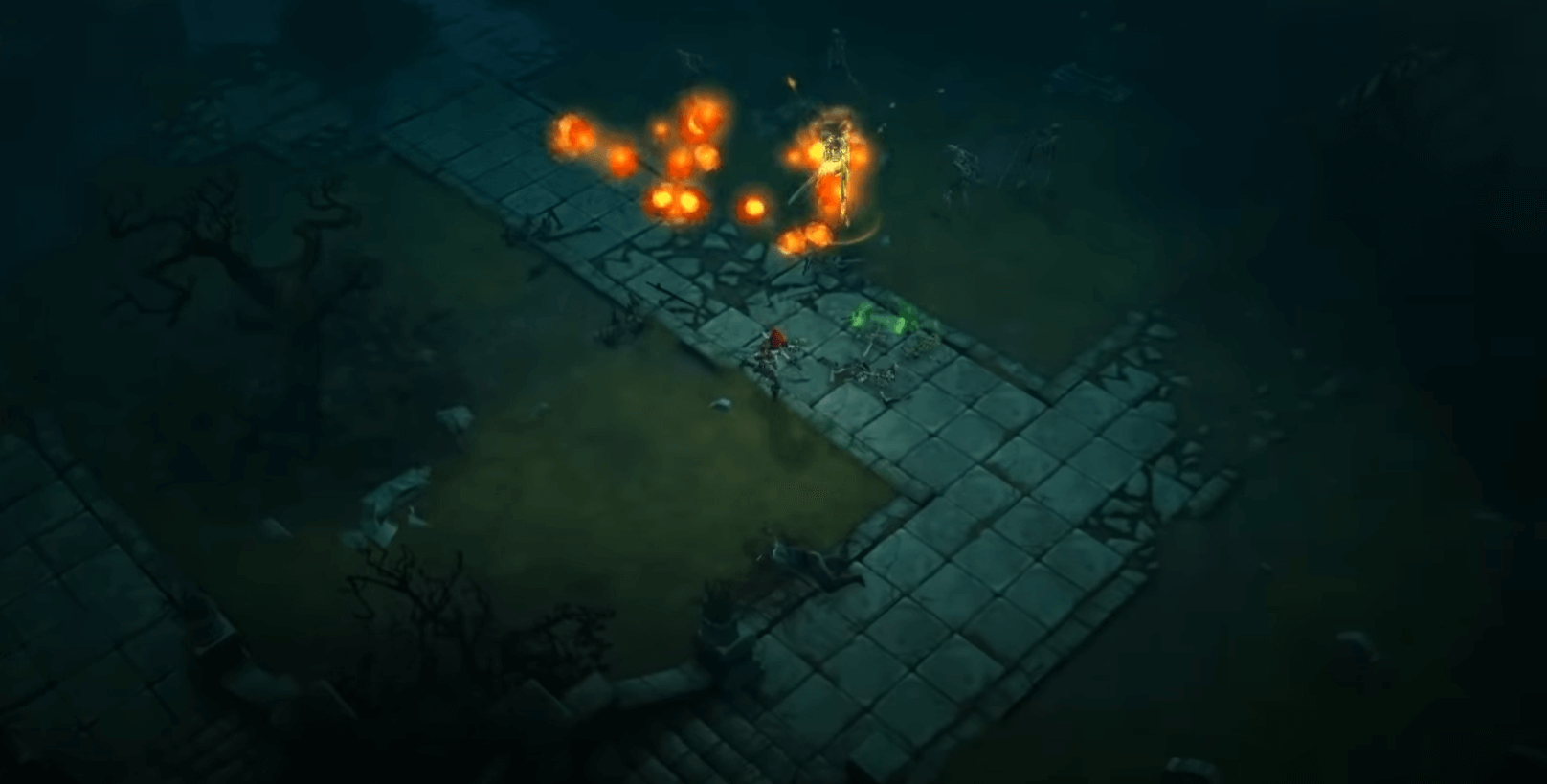
At its core, Diablo 3 is an addictive, action-packed role-playing game developed by Blizzard Entertainment. It improves upon its predecessors by introducing a variety of new features like the Skill Runes system, crafting system, auction house, and PvP arena. Set in the eerie world of Sanctuary, this game draws players into an epic struggle against demons and other hellish creatures. Aside from the gripping storyline, Diablo 3 captivates gamers with its diverse character classes, each offering unique skills and abilities that significantly affect gameplay.
Over the years, the game has seen multiple expansions, the last being the necromancer pack which expanded the options for gameplay and class choice. This is the sort of intense, gripping, and immersive experience that Diablo 3 consistently delivers. If you're a fan of Diablo 3, the good news is that there's a host of similarly engrossing games out there that offer a blend of strategy, action, storyline, and fantasy elements. Games like Path of Exile, Torchlight II, Grim Dawn, Sacred 2, and more pave the way…
25. Path of Exile

Path of Exile is like Diablo 3 in many charismatic ways that would instantly appeal to you as a Diablo enthusiast. The fundamental game mechanics are uncannily familiar, including combat style, skill sets, boss fights and general controls, carrying the same top-down perspective. The user interface and hotkey setting are designed similarly to Diablo's, optimizing for seamless gameplay. Moreover, the dark and mysterious ambiance of the game universe too echoes that of Diablo, immersing players into a world filled with grotesque monsters and thrilling adventure.
A key element of both games is their deep and rich character customization systems. Much like Diablo 3, Path of Exile features an exhaustive skill tree, giving players room for building unique character skills and playstyles. However, Path of Exile amplifies this with numerous ascendancy classes that provide supplementary passive skills and bonuses. Looting and crafting aspects are another striking parallel, where players can stumble upon various items during their quests. The in-game economy is driven by bartering these items, introducing a trading appeal similar to Diablo's.
Path of Exile is available on PC, Xbox One and PlayStation 4, and the best part? It’s free! As a free-to-play game, Path of Exile offers massive value and comparable depth to premium titles like Diablo 3, possibly steering your gaming trajectory to an addictive and engrossing fantasy world.
24. Grim Dawn
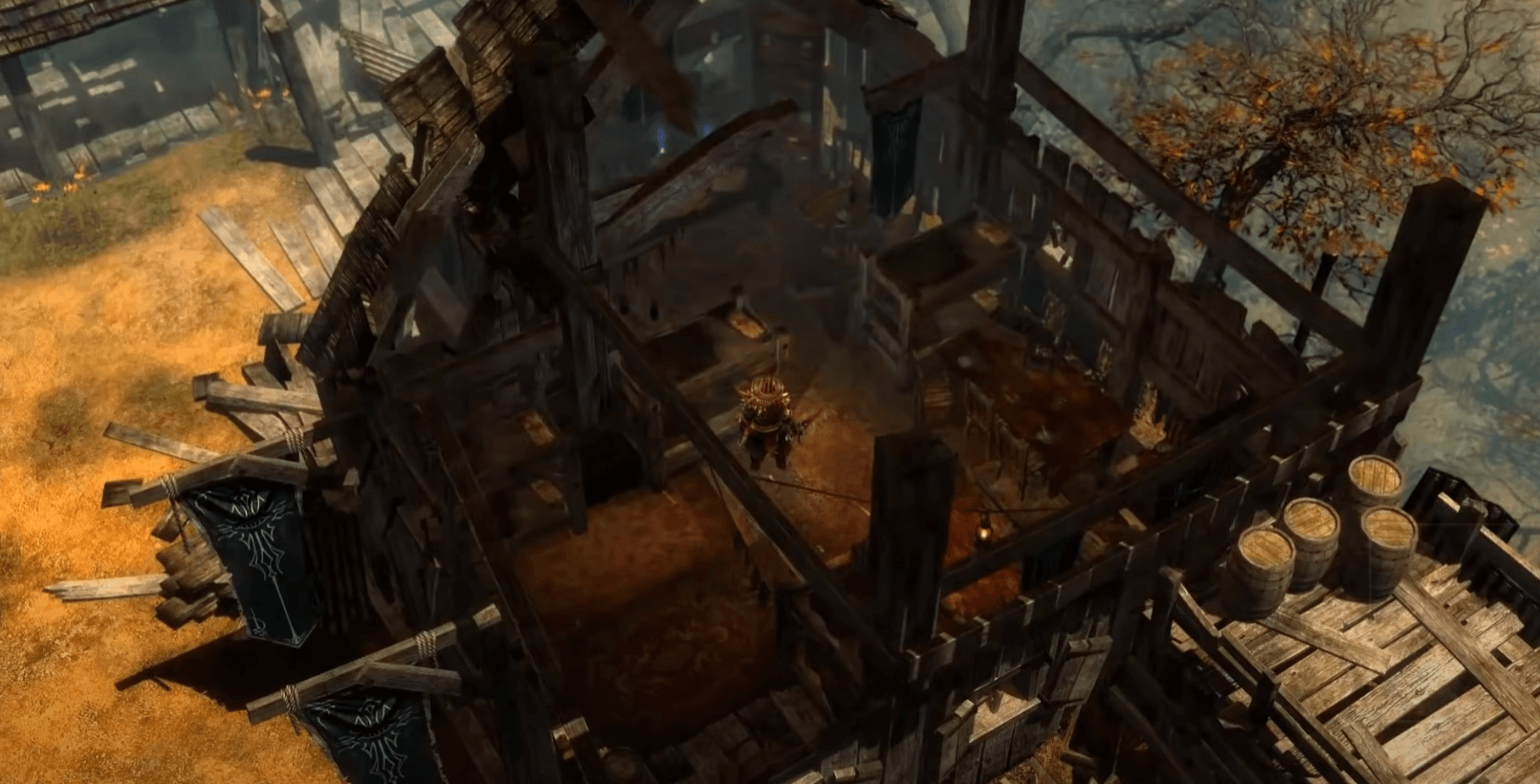
If you're a fan of Diablo 3, you're going to love Grim Dawn, as they share a lot of similarities, enhancing the best parts of the action RPG genre they embody. Like Diablo 3, Grim Dawn has a beautifully grim atmosphere as the backdrop to your journey. You'll traverse unique, gothic landscapes, and encounter dark creatures and powerful bosses, but Grim Dawn adds its own unique twist with steampunk and apocalyptic elements which create a unique and captivating world. The story, just like Diablo 3, is rich and compelling, drawing you into a world on the brink of extinction.
Gameplay-wise, you're in for a treat. Like Diablo 3, Grim Dawn allows for in-depth character customization, with a dual-class system that lets you combine any of six distinct classes, each with their own unique abilities and play styles. The loot system is rewarding and diverse, with countless weapon types and armor sets to find, just like you're used to from Diablo 3. Plus, if you enjoyed Diablo's Rift system, Grim Dawn offers a similar "Rogue-like" mission system, which sees you delving into treacherous dungeons for even better loot, with the risk of losing it all if you die. This risk-reward approach to gameplay makes for highly addictive sessions that will have you coming back for more.
Grim Dawn is available on PC, typically priced around $24.99 USD.
23. Torchlight II
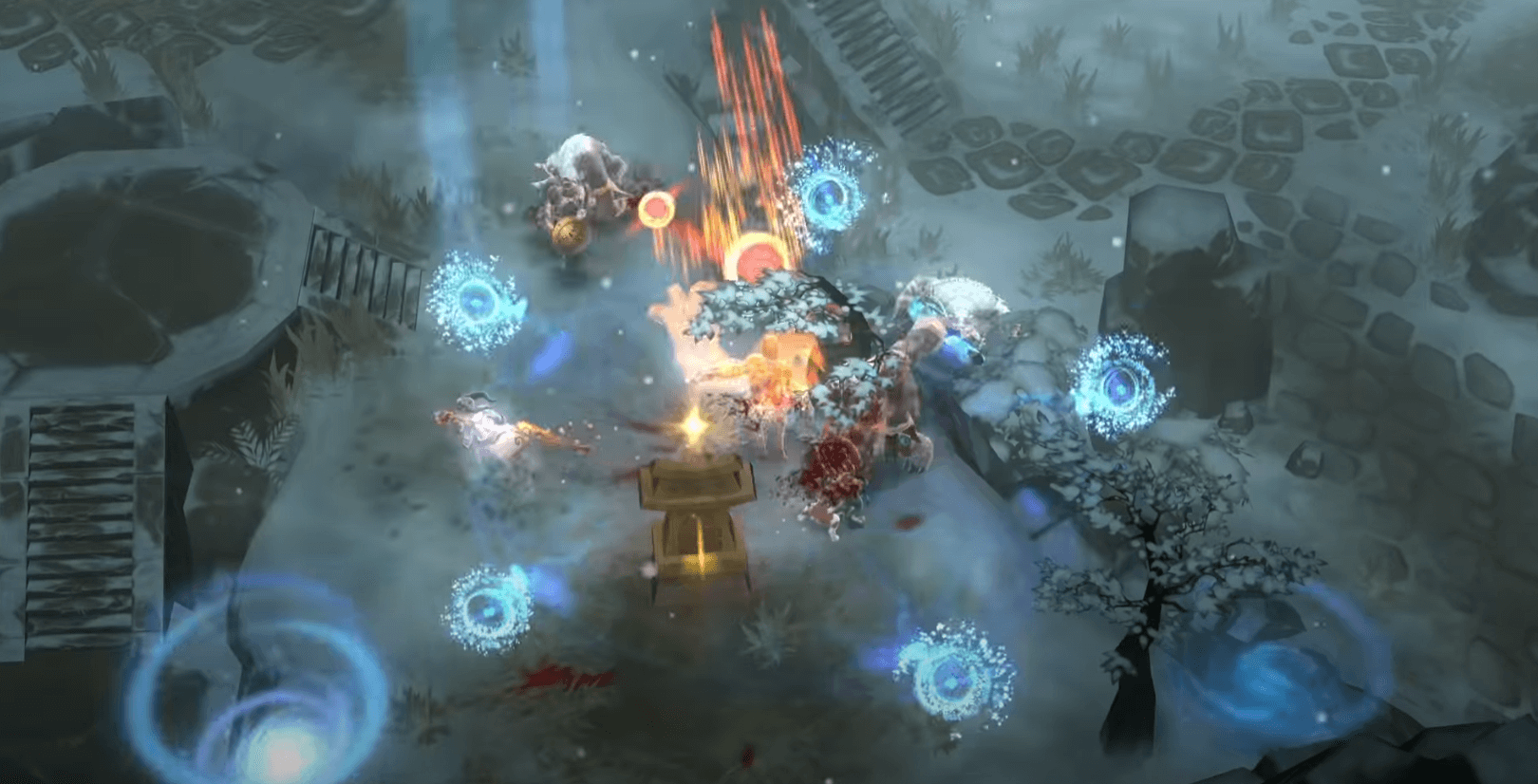
Torchlight II, like Diablo 3, belongs to the action role-playing hack-and-slash genre. Both games are set from an isometric perspective and contain similar gameplay mechanics including randomly generated dungeons, loot, and combat systems. In Torchlight II, you can choose from four distinctive character classes, each with unique skills and abilities, much like the character class system in Diablo 3. Likewise, both games contain elements of strategy and player choice, requiring you to carefully consider your equipment, stats, and skills - resulting in a satisfying sense of progression.
Furthermore, Torchlight II meticulously incorporates the darker fantasy style apparent in Diablo 3 but adds its unique flair through distinctive art direction and lighter, more vibrant colors. The storyline of Torchlight II, much like Diablo 3's lore-filled saga, engulfs you in a rich world with complex histories and numerous factions vying for power. Both games offer a level of replayability through New Game Plus modes, which allows you to replay the campaign with your current progression but presents tougher enemies for an increased challenge. Plus, Torchlight II has a cooperative multiplayer, akin to Diablo 3's multiplayer, enabling you to take on the world with friends or strangers.
Torchlight II is available on PC, PlayStation 4, Xbox One, and Nintendo Switch, typically priced around $19.99 USD.
22. Titan Quest
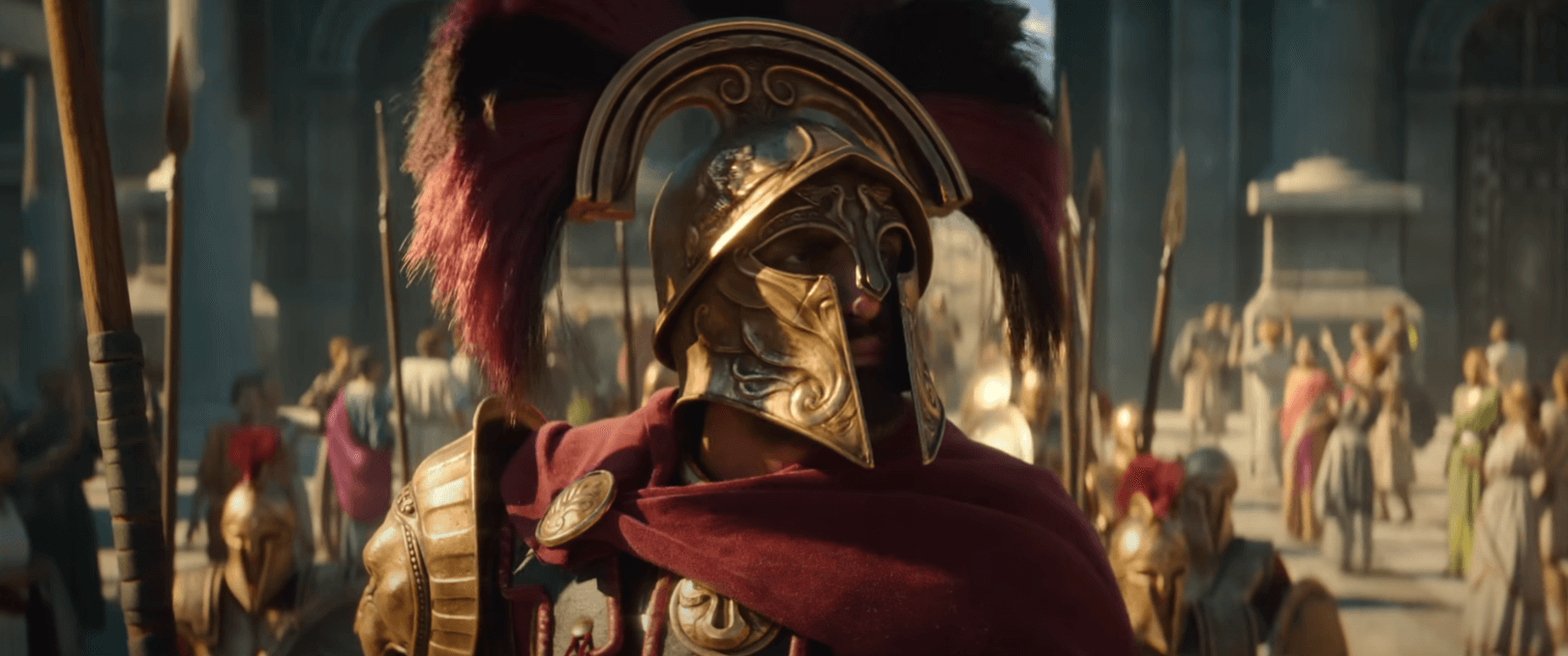
Titan Quest is a fascinating game that shares similar traits with Diablo 3. From an isometric perspective, you'll traverse various mythological worlds like ancient Greece, Egypt, and Asia, in a similar fashion to exploring Sanctuary in Diablo 3. The looting system is also similar, with monsters dropping a variety of gear items, weapons, and potions that vary in rarity and power. You'll also find scattered treasure chests around the maps, much like in Diablo 3. And like the randomly-generated dungeons in Diablo, Titan Quest will delight you with a fair share of hidden locations and side quests which process a good exploration challenge.
The other similarity lies in the character development and talent tree. Much like in Diablo 3, Titan Quest enables you to customize your character's abilities, traits, and powers. Based on your desired playstyle, you can delve into different mastery trees, which can be combined to create unique class synergies. The approach to the combat in Titan Quest is also similar to Diablo 3 - you have to fight hordes of enemies at once, making crowd control skills crucial.
Titan Quest is available on Microsoft Windows, PlayStation 4, Nintendo Switch, Xbox One, iOS, and Android, typically priced around $20 USD.
21. Sacred 2
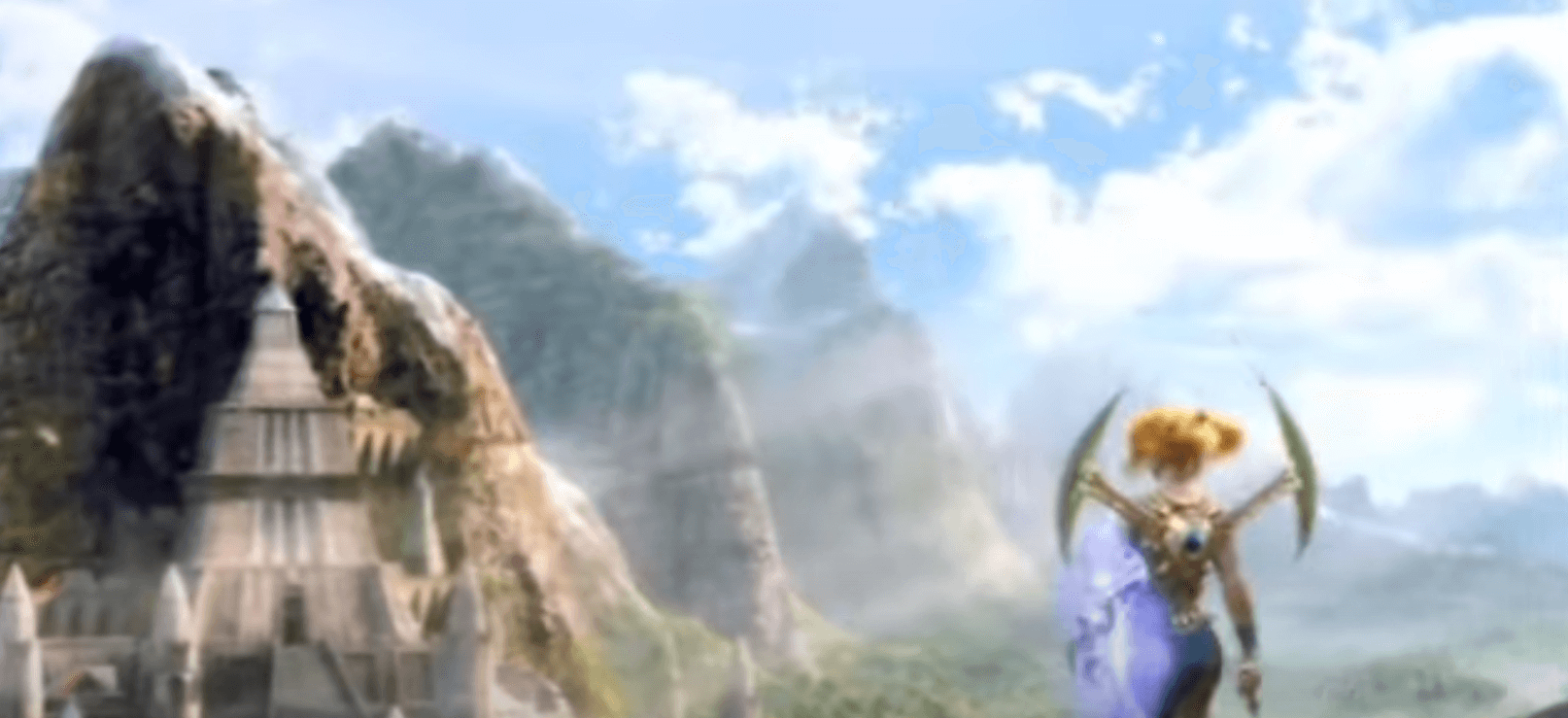
It's fantastic that you are a fan of Diablo III, as Sacred 2 will undoubtedly feel familiar. Much like Diablo III, Sacred 2 features an exciting and immersive world packed with diverse monsters, elaborate quests, and a veritable smorgasbord of gear for you to discover and equip. You'll find this action-oriented role-playing game replete with complex systems that truly allow you to personalize and shape your character's abilities. Just like in Diablo, you'll feel the thrill of descending into dungeon depths and defeating diabolical enemies, all in the quest for astonishing treasures.
Moreover, the similarities don't stop there. Both games provide the option of playing solo or teaming up with others for a cooperative experience. Engage in multiplayer action in Sacred 2 just as you did in Diablo III, perfect for those times when you crave company in your virtual adventures. In addition, both games take pride in extensive maps filled with diverse environments to explore, keeping the journey exciting and new at every turn. If you enjoyed the customization in Diablo III, you'd be pleased to know that Sacred 2 also features character customization in terms of both skills and appearance. The loot systems also follow similar principles, presenting you with an irresistible array of opportunities to obtain legendary items and gear.
Sacred 2 is available on PlayStation 3, Xbox 360, and PC, typically priced around $20 USD.
20. Victor Vran
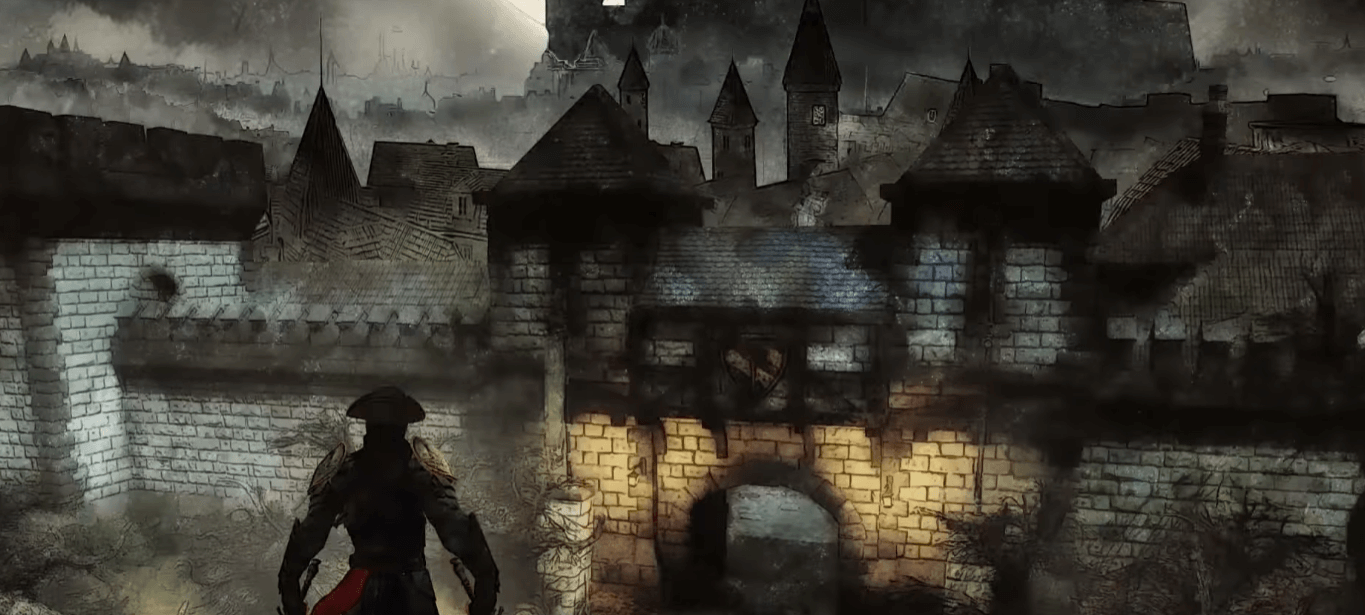
The game Victor Vran offers an engaging gameplay experience that is very much akin to Diablo 3. Both games are activity-oriented, and much excitement can be derived from constantly upgrading your characters' skills weaponry, and armor, taking you deep into the realms of demon hunting. The games share a highly immersive isometric backdrop that makes battling hordes of monsters thrilling. Both games employ detailed loot systems in their gameplay; you will be required to gather new resources to improve your chances of survival constantly.
In Victor Vran, you get to navigate densely grim labyrinths filled with demons, ghouls, and skeletal monsters in your quest to eliminate evil, just as in Diablo 3. Even more striking is the similarity in the deep-rooted strategy involved; your survival in both games depends significantly on how you plan your attacks and defenses. Furthermore, Victor Vran expands upon the multiplayer experience that Diablo 3 offers - it allows you to team up with three other players to overcome the numerous challenges the game presents. If you enjoyed Diablo 3's cooperative gameplay, you'd likely find Victor Vran's multiplayer mode equally entertaining.
Victor Vran is available on PlayStation 4, Xbox One, Nintendo Switch, and PC, typically priced around $20 USD.
19. The Incredible Adventures of Van Helsing
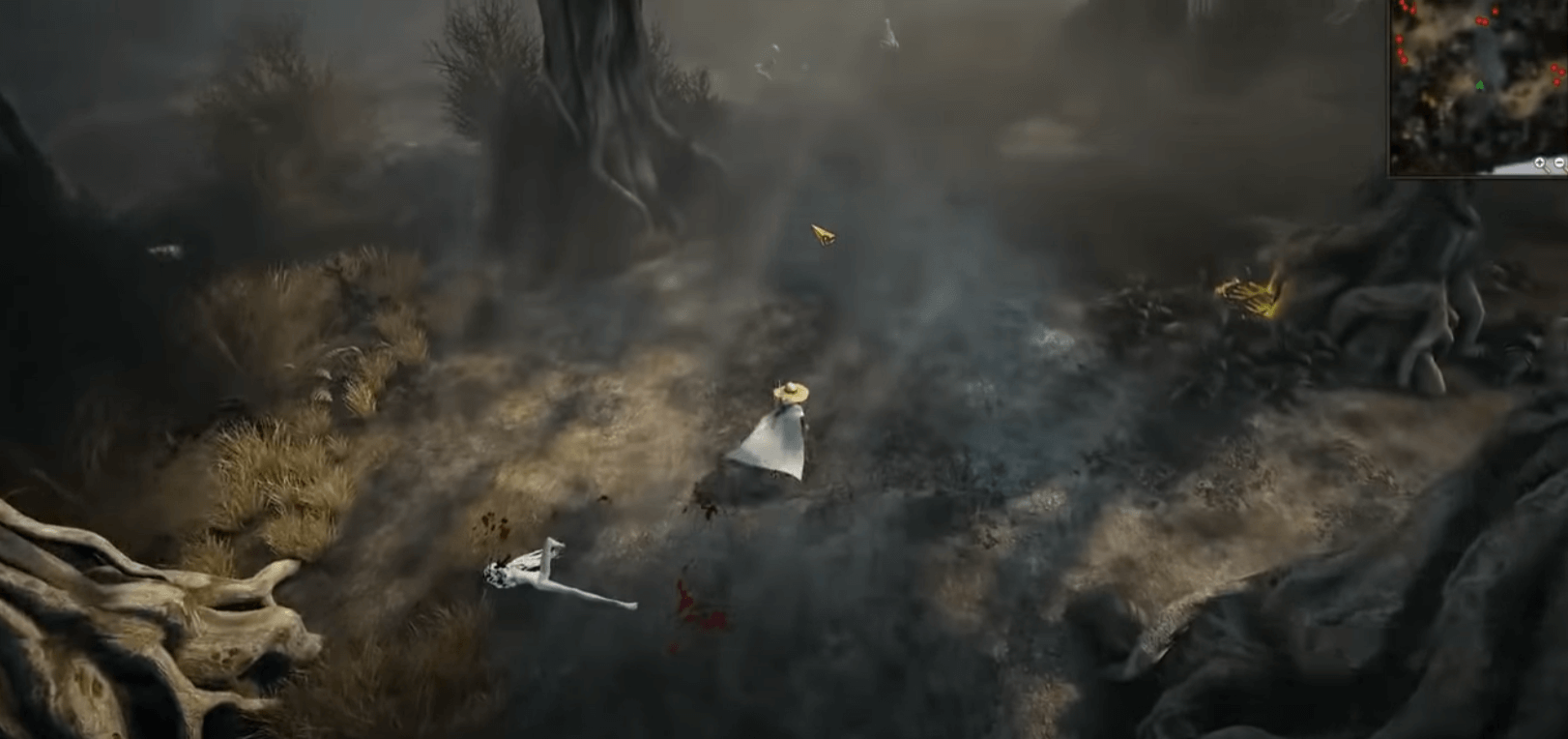
The Incredible Adventures of Van Helsing definitely has some similar pulls to Diablo 3 that could pique your interest. Much like Diablo, Van Helsing's gameplay revolves around the classic hack and slash, dungeon crawler format. You will be fighting your way through hordes of enemies, leveling up your character, and scrounging valuable loot along the way. Even further, it boasts an expansive, atmospheric world full of diverse enemies, coupled with an engaging, gothic-inspired story that could easily capture the heart of any Diablo fan.
From a gameplay perspective, you will find a lot of common ground with Diablo 3. You have a wide selection of skills and abilities to customize your character to your liking, and the loot system is extensive, providing you with an array of weapons, armor, and magical items to equip. More so, The Incredible Adventures of Van Helsing has a similarly paced combat system which focuses on crowd control, much like Diablo 3, turning every fight into a thrilling, strategic battle. Even the multiplayer component in Van Helsing is similar to Diablo's, allowing you to team up with other players and take on the game's challenges cooperatively.
The Incredible Adventures of Van Helsing is available on PlayStation 4, Xbox One, and PC. It is typically priced around $15 USD, making it a very wallet-friendly alternative to many other titles in the genre.
18. Divinity: Original Sin 2

Diablo 3 and Divinity: Original Sin 2 share a number of key similarities which are why both games are often praised by RPG fans. Firstly, both games feature a lush, sprawling world filled with countless adventures waiting for you to undertake. The rich lore, intricate storylines, and complex character relationships make the universe of these games as captivating as any fantasy novel. Both games also offer the usual RPG elements like character customization, a large variety of classes and races to choose from, and a complex system of skills and abilities to level up and unlock.
Combat is another area where both games shine. Like Diablo 3, Divinity: Original Sin 2 features a very dynamic and tactical turn-based combat system. You utilize various strategies to outsmart enemies, combining different abilities and spells for devastating effect. The environmental interactions in the combat system also add another layer of complexity and excitement. The freedom and creativity offered in the combat, coupled with the depth of the customization, make for a wide range of possibilities and challenges, ensuring you will never get bored with encounters.
Divinity: Original Sin 2 is available on Microsoft Windows, PlayStation 4, Xbox One, and Nintendo Switch, typically priced around $20 USD.
17. Pillars of Eternity
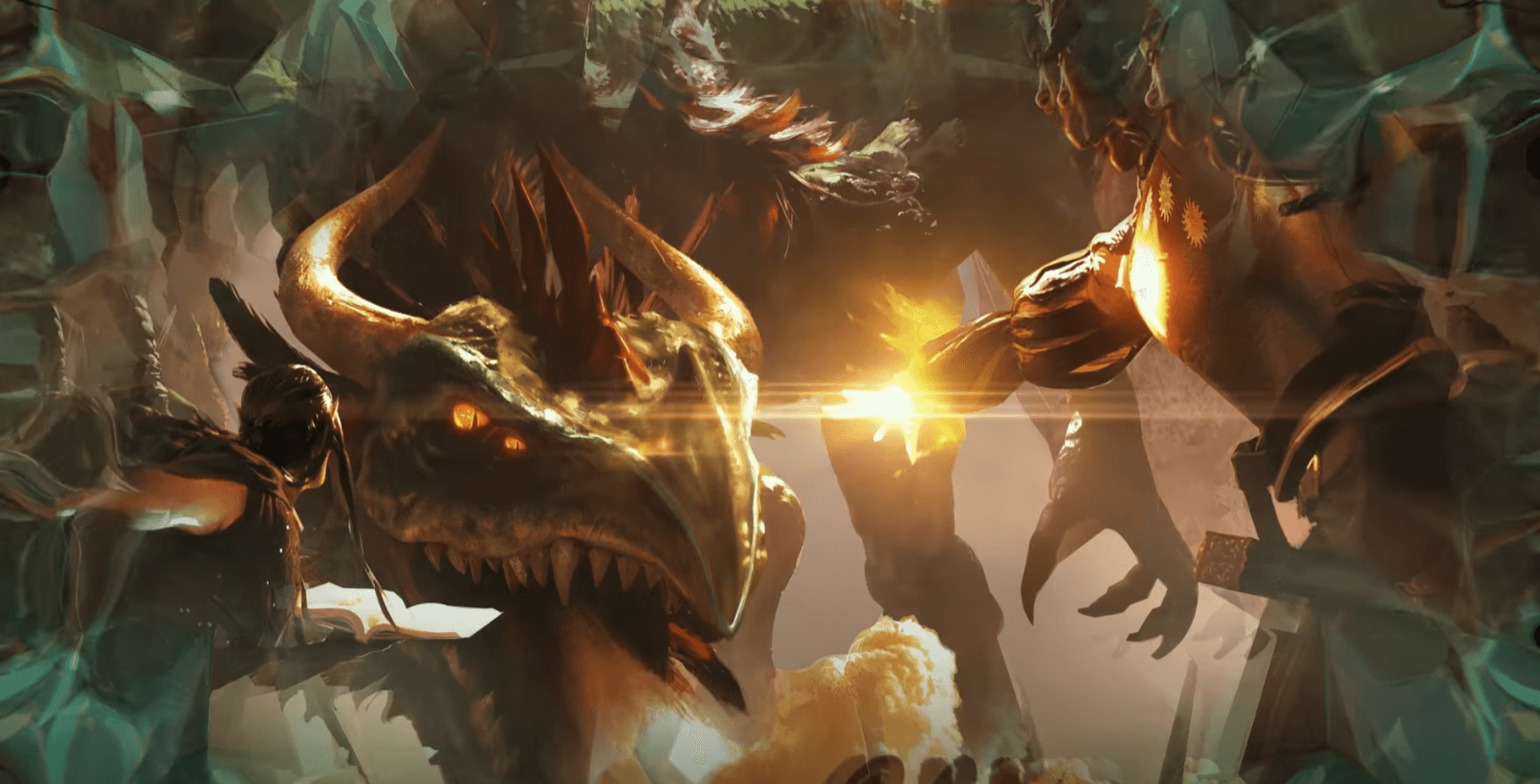
If you enjoyed hacking and slashing your way through the dungeons of Diablo 3, then Pillars of Eternity offers a similar gameplay experience you'll appreciate. Like Diablo 3, it is an isometric role-playing game featuring engaging narratives, immersive environments, and good old hack n' slash combat. The beautiful thing about Pillars of Eternity is that it borrows heavily from another RPG classic, Dungeons & Dragons, bringing a rich vein of traditional RPG gameplay elements to its path. It intrigues the player with complex dialogue choices and character development potentials.
What truly sets Pillars of Eternity apart, yet aligns it closely with Diablo 3, is the degree of personalization and depth in combat. If you enjoyed Diablo 3's territory-based battles and skill trees, which allowed you to modify the playstyle to your liking, you'll find a similar satisfaction with Pillars of Eternity. There are six races, eleven classes, and various sub-classes to choose from, which not only offer a wide range of customization options but also drastically impact the gameplay and narrative, much like Diablo 3.
Pillars of Eternity is available on PC, PlayStation 4, Xbox One, and Nintendo Switch, typically priced around $29.99 USD.
16. Neverwinter Nights
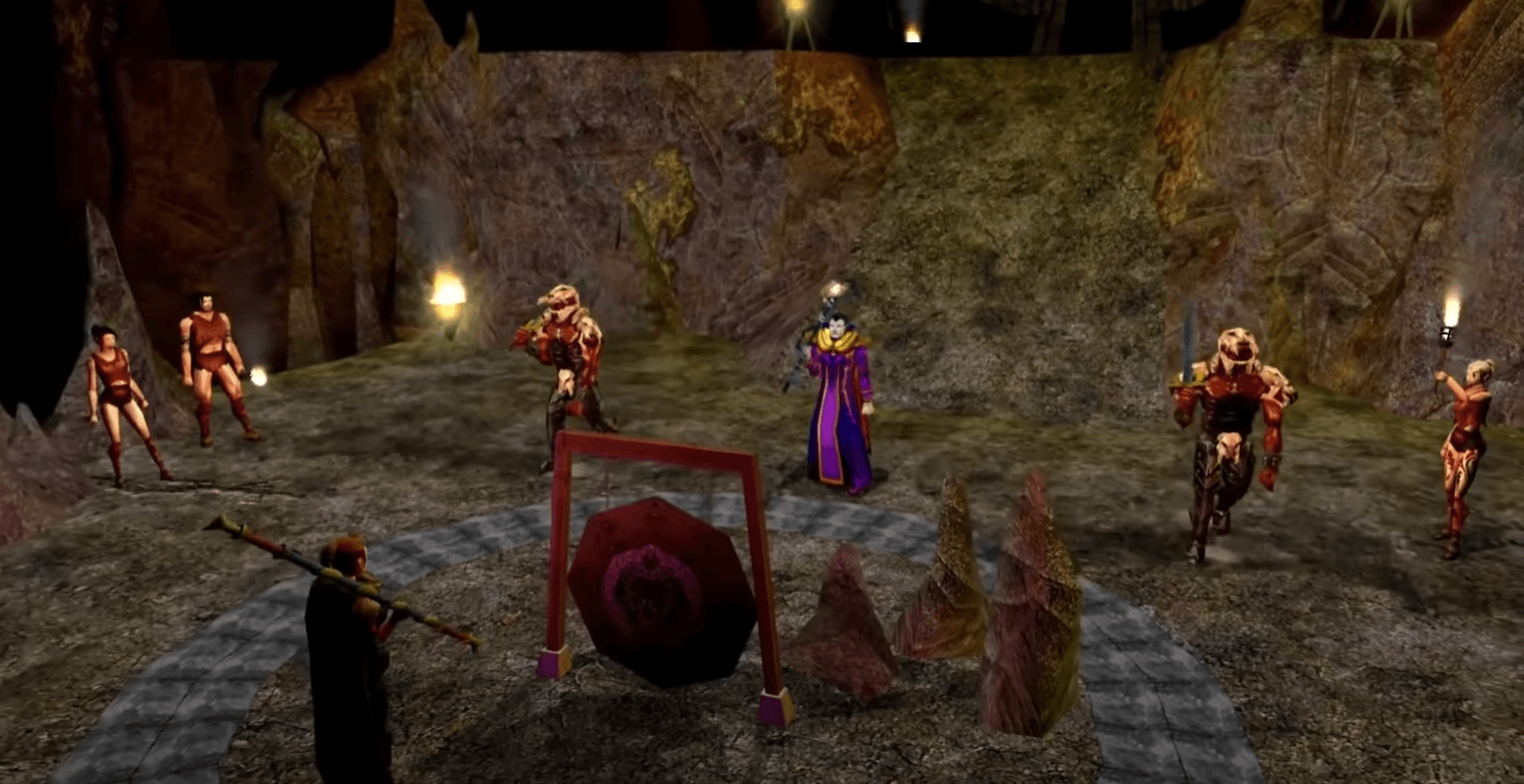
Neverwinter Nights is a game reminiscent of Diablo 3 in many ways. They both belong to the role-playing game genre, focusing on character development, missions, side quests, and of course, epic loot. Combat in both games is action-oriented, and the thrill of battling monsters is captured expertly in both universes, especially with the function to recruit NPCs to aid you in battle in Neverwinter Nights, much like the followers in Diablo 3. Both games provide a range of diverse character classes, each with unique abilities and play styles, ensuring replayability.
The settings in both games are dark and atmospheric, centered around a fantasy world filled with mythical creatures and magic. They boast deep and immersive lore, so if you were captivated by the narrative of Diablo 3, Neverwinter Nights fills that same niche. The multiplayer component of Neverwinter Nights is also quite comparable to Diablo 3's, offering a cooperative mode so you can explore and tackle challenges with friends. Another similarity is the toolset provided in Neverwinter Nights that allows you to create and manage your very own dungeons, much like the Rifts in Diablo 3.
Neverwinter Nights is available on PC, PS4, XBOX One, and Nintendo Switch, typically priced around $49.99 USD.
15. Baldur's Gate II
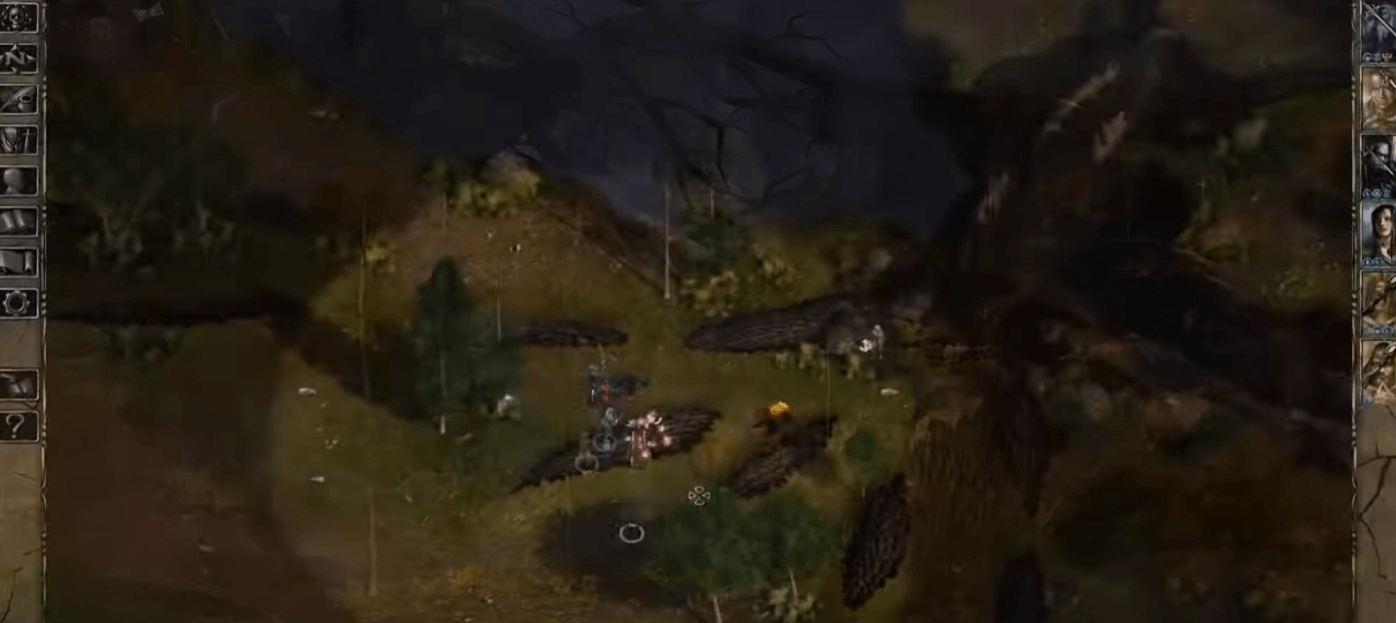
Both Baldur's Gate II and Diablo 3 shine in their engaging role-playing elements. They share a lot of essential gameplay mechanistics, both being set in a high-fantasy scenario where you play as a hero. Combat in both games is deeply satisfying and tactical. Whether you're taking down hordes of enemies with a well-placed spell in BG II or using a unique class skill in Diablo 3, you'll notice the strategic mindset required for both games is astonishingly similar. In addition, both games have a rich and deep narrative that is bound to pull you in, with characters you will grow to care about and a world dripping with lore and explore.
Indeed, there's a definite similarity in the atmospheres of these two games, as both provide a dark and gritty environment filled with perilous dungeons and deadly creatures lurking in each corner. The in-depth character customization and choice progression in Baldur's Gate II are't dissimilar to how Diablo 3 allows you to choose your hero among different classes, each boasting unique abilities and spells. If you especially enjoyed the loot system in Diablo 3, bidding to find powerful weapons and rare items, you'll be glad to know that searching for treasures and upgrading your equipment plays a vital role in Baldur's Gate II as well. The exploration aspect found in Diablo 3 where you roam through the various regions of Sanctuary is comparable to the expansive world-building in Baldur's Gate II where each city, dungeon, and wilderness area has its unique charm and secrets to uncover.
Baldur's Gate II is available on PC and macOS, typically priced around $20 USD.
14. Wolcen: Lords of Mayhem
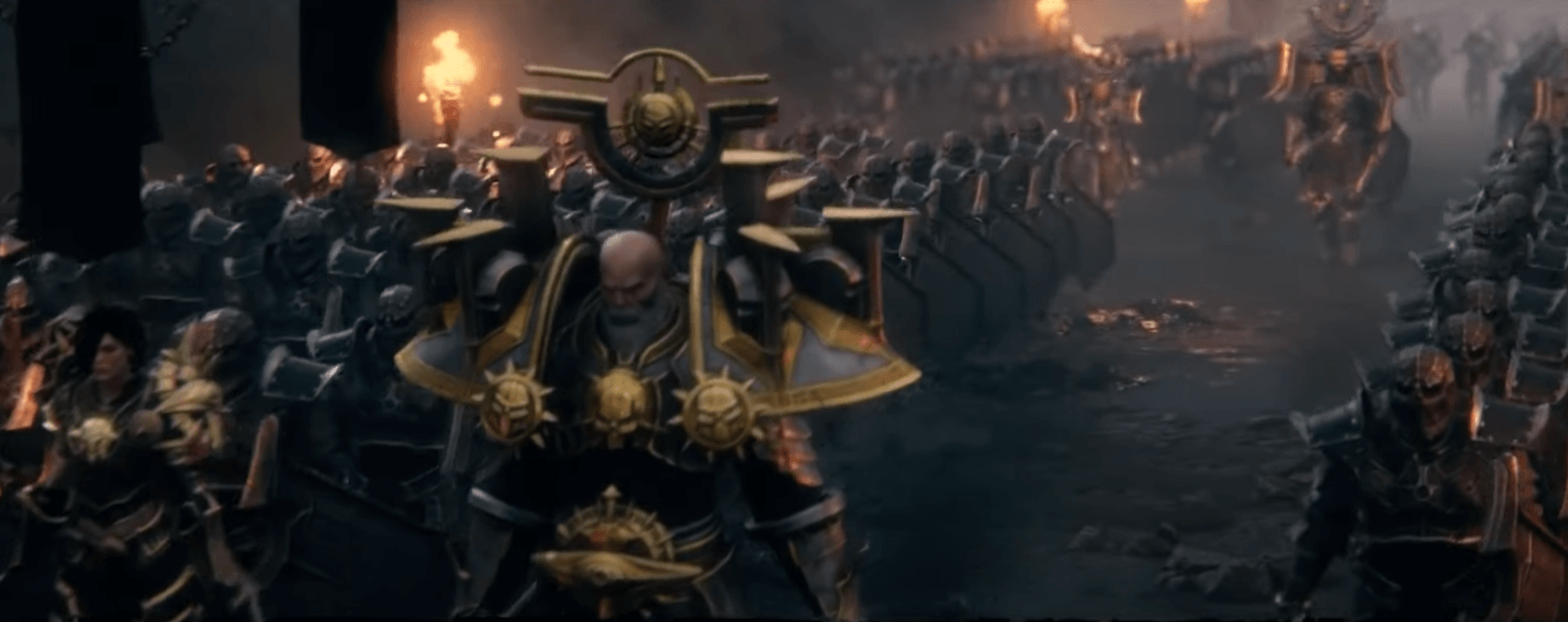
Wolcen: Lords of Mayhem presents a similar dark atmospheric theme and intense combat that you loved in Diablo 3. Like Diablo 3, Wolcen's carefully detailed universe is full of interesting characters, eldritch horrors, and an overarching plot of betrayal and redemption. You'd love Wolcen's deep and customisable 'free-form' character progression which allows you to personalise your character's abilities and stats, just like the flexibility of Diablo 3's skill system.
The core gameplay loop of Wolcen, much like Diablo 3, involves visceral, action-packed battles against hordes of supernatural enemies, unearthing exotic weapons and gear as you delve into procedurally generated dungeons. As a fan of Diablo 3, you'll feel a sense of familiarity with Wolcen's prowess in mixing a high level of replayability with challenging, satisfying combat. If you loved endlessly tuning your character in Diablo, you'd love Wolcen even more as it takes it a notch higher with its revolving 'wheel of fate' passive skill tree and its exciting apocalyptic form transformations.
Wolcen: Lords of Mayhem is available on Steam for PC, typically priced around $40 USD.
13. The Bard’s Tale
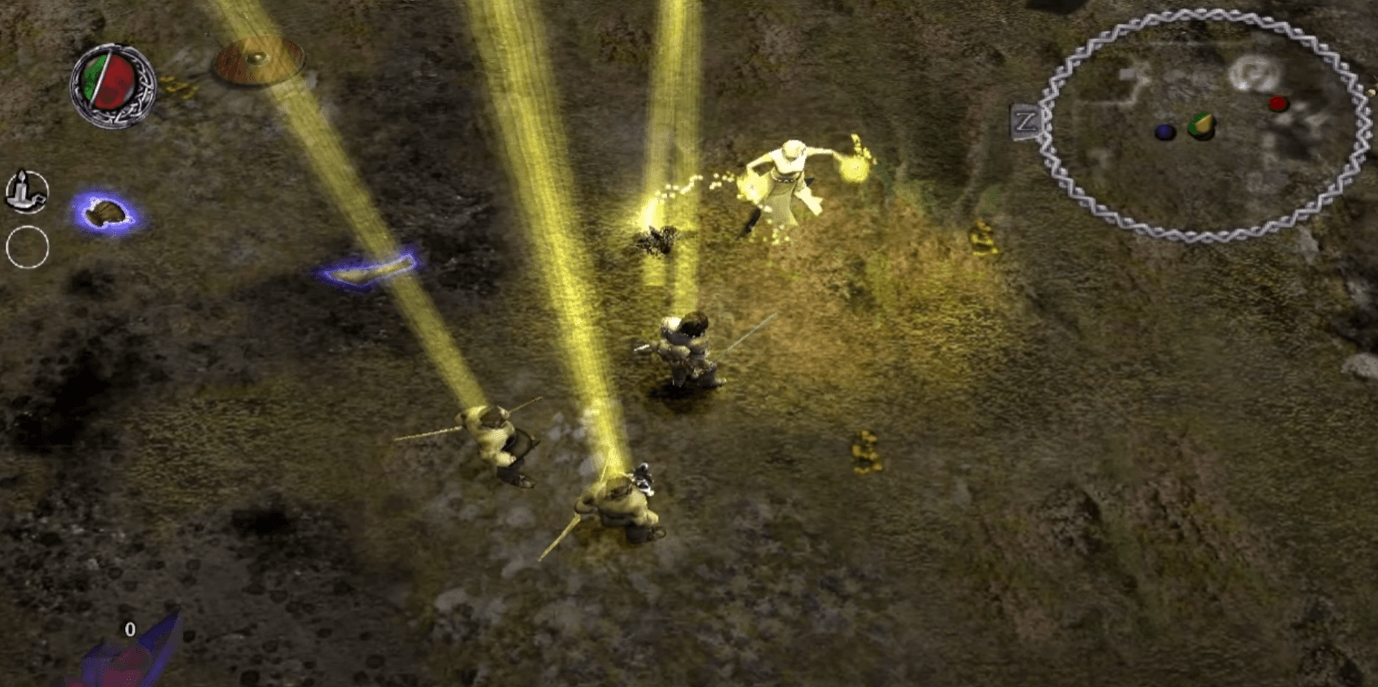
Just like Diablo 3, The Bard's Tale is a classic role-playing game that is sure to satisfy your desire for dungeon crawling. In much the same way as Diablo 3, in The Bard's Tale you get to wander across a beautifully constructed world, battle grotesque monsters, and hunt magnificent treasures. You'll find that the intricate inventory system, character skill upgrades, and strategic party system are quite similar to what you're used to in Diablo 3.
Another similarity that makes The Bard's Tale comparable to Diablo 3 is the rich narrative storytelling. You'll journey through interesting and challenging quests, engage with numerous NPCs, and uncover truly absorbing lore that will captivate you, just as the storyline in Diablo 3 does. The dark-fantasy atmosphere and immersive soundtrack, akin to Diablo's, provide an exceptional gaming experience. The Bard's Tale, like Diablo 3, also offers a high level of character customization so you can tailor your hero as you desire.
The Bard's Tale is available on PC, PlayStation 4, and Xbox One, typically priced around $19.99 USD.
12. Gauntlet
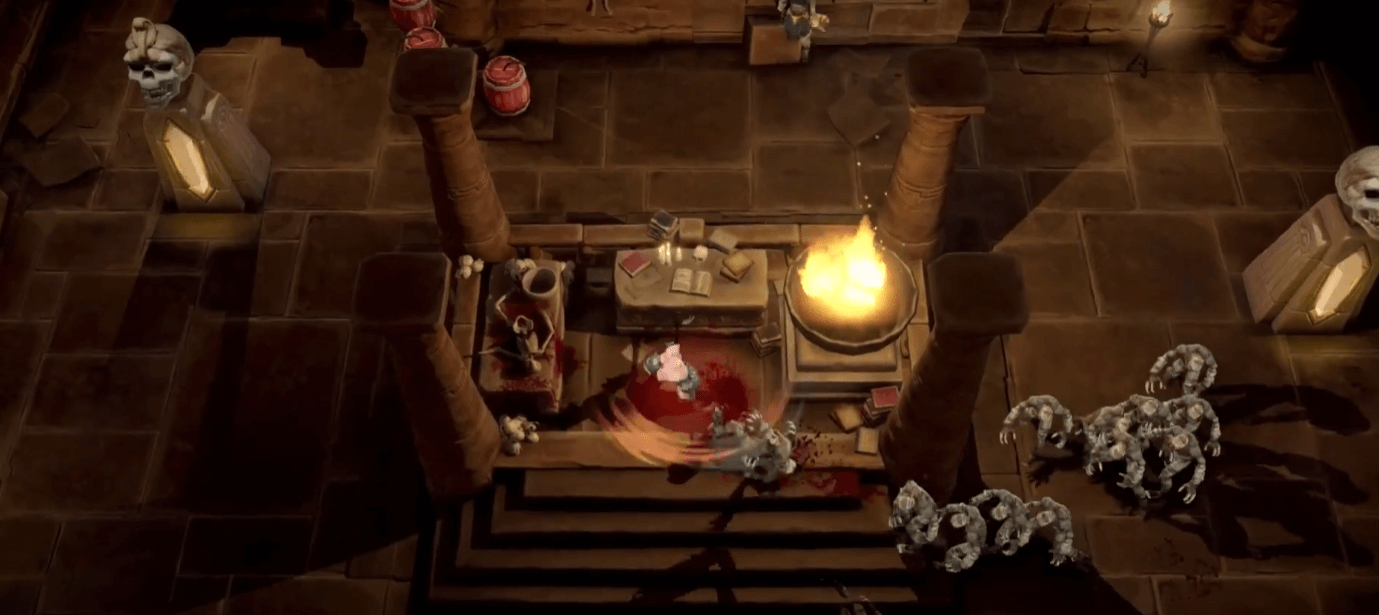
If you're looking for an adventure that replicates the hack-and-slash style that Diablo 3 has popularized, then look no further than Gauntlet! Like Diablo 3, Gauntlet thrives on a dark fantasy atmosphere, featuring catacombs, castles, and crypts populated by your typical undead fodder including ghosts, ghouls, and demons. Just like Diablo, you'll start by choosing a character class. You're offered a choice of four, each with their own unique abilities - the Warrior, Valkyrie, Elf, or Wizard. Every character feels distinct in combat and encourages different play styles, providing a fresh take on the game with each new playthrough.
Similar to Diablo 3, Gauntlet puts a substantial emphasis on cooperative multi-player. You can team up with up to three other players for an action-packed gaming session, carving through waves of enemies, taking down bosses together, and competing for the top spot on the overall scoreboard. Additionally, Gauntlet focuses heavily on loot, with each level filled with treasure chests brimming with gold. The emphasis on loot collection and the satisfying, crunchy combat make Gauntlet a perfect candidate if you're seeking a Diablo-like experience with a touch of classic nostalgia.
Gauntlet is available on Microsoft Windows, PlayStation 4, and Xbox One, typically priced around $20 USD.
11. Sacred
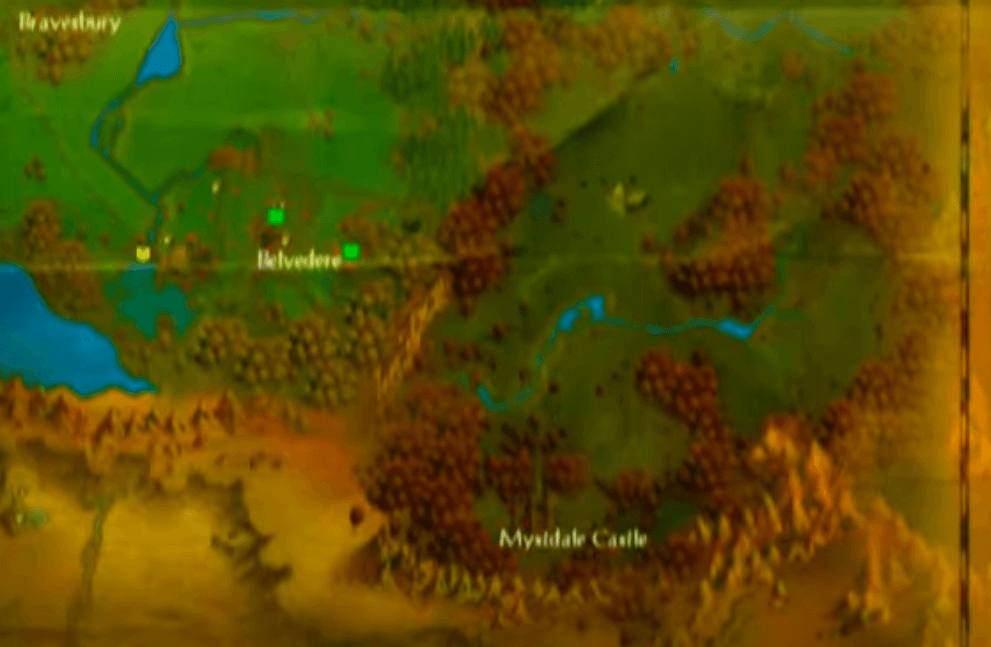
If you enjoyed the hack-and-slash dungeon crawling aspects of Diablo 3, then you would definitely like Sacred. Much like Diablo 3, Sacred is also an action RPG that emphasizes on exploration and combat. It features a vast world filled with numerous quests, regularly updated content, and an extensive range of monsters, bosses, and hidden treasures. But the kicker here is its loot system, which is reminiscent of Diablo's extensive selection of unique weapons, armor, and artifacts that play a crucial role in character's abilities and skills.
Sacred also possesses strong character customization, a vital attribute that Diablo 3 excels in. You could pick from a variety of characters, each having unique sets of abilities and progression systems. The mastery and skill tree system ensures endless possibilities when it comes to creating a personalized playstyle, paralleling the immense satisfaction that comes from perfecting powerful character builds in Diablo 3. Most importantly, the dark and gothic aesthetic of Diablo 3 permeates through the landscapes and dungeons of Sacred, making its world feels eerily familiar but intriguingly distinct.
Sacred is available on PC, typically priced around $15 USD.
10. Mage Knight: Apocalypse
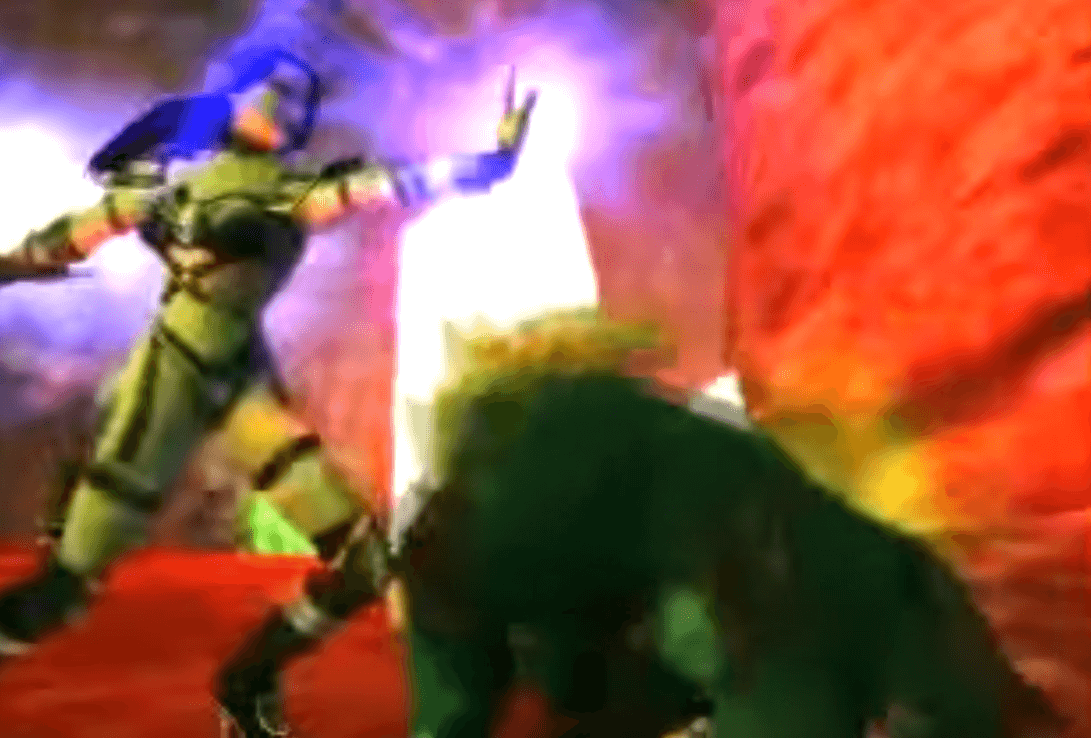
To begin with, Mage Knight: Apocalypse shares Diablo 3's isometric perspective gameplay which is deeply rooted in the action RPG genre. Both games offer a rich storyline filled with quests, powerful foes and enthralling fantasy environments. Just like Diablo 3, Mage Knight: Apocalypse presents an extensive character customization system. You can choose from five distinctive character classes, each coming with its unique abilities and skill sets. This aspect of the game allows you to develop highly specialized characters, much like Diablo 3's skill tree and the Paragon system.
Mage Knight: Apocalypse also mirrors Diablo 3's dungeon crawling approach, where exploring hidden treasures and defeating waves of enemies is the order of the day. The consistent need for better gear and leveling up skills results in that same addictive gameplay loop Diablo 3 fans are well familiar with. Additionally, Mage Knight: Apocalypse introduces a Combo System: as you string attacks you can unleash powerful combos, it adds a certain dynamic nuance to combat which you'll appreciate if you enjoyed the pacing of Diablo 3. It offers both single-player and multiplayer modes, offering cooperative questing or battling out in the PvP arenas.
Mage Knight: Apocalypse is available on PC platforms, typically priced around $19.99 USD.
9. Dungeon Siege II
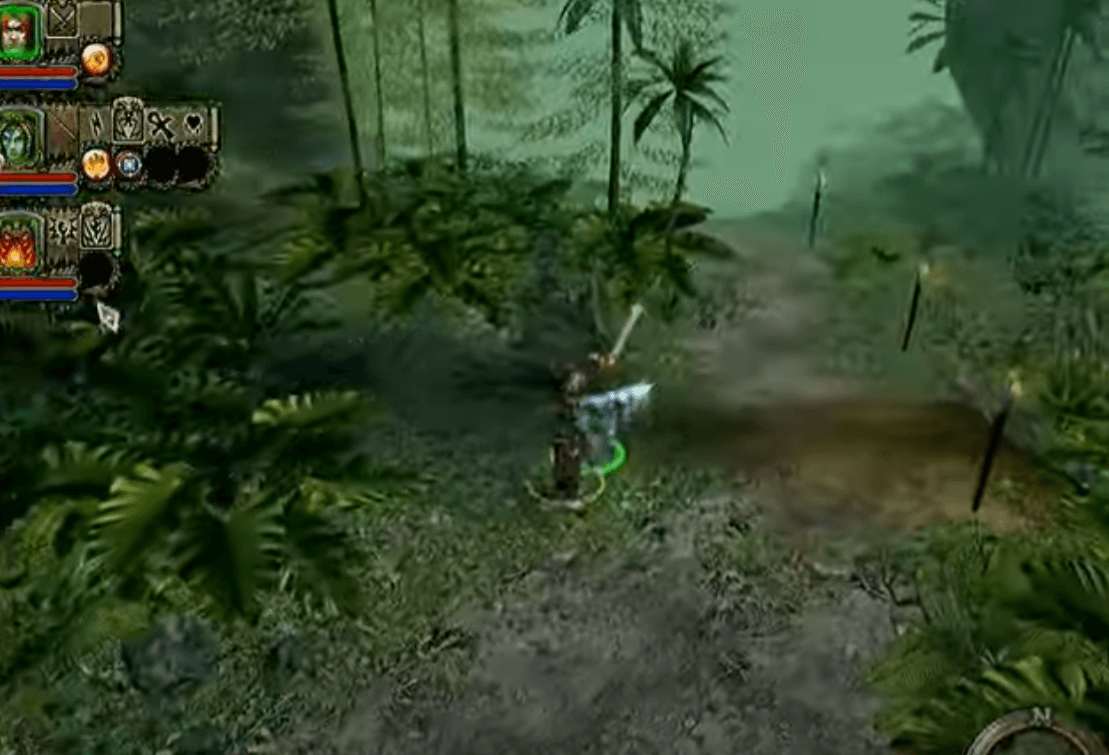
Well, that's great to hear that you enjoyed Diablo 3, you'll surely find Dungeon Siege II remarkable then as it shares several gameplay elements with Diablo's series. Both are popular in the Action RPG genre, providing real-time, fast-paced combat where you take control of a hero in a fantasy world, hacking and slashing your way across vast terrains battling various monsters. Level progression and loot system is a significant aspect in these games, supplying rooms for customization and development. Dungeon Siege II, much like Diablo 3, lets you customize your character through skill trees and equipping items obtained from random drops, offering endless replayability.
One of the cool features Dungeon Siege II shares with Diablo 3 is the intricate and engaging storyline. In both games, the immersive narrative unfolds as you navigate through the game, taking on main quests and side missions, meeting intriguing characters along the way. Multiplayer mode where you can team up with friends or play competitively is another similarity between the two games. Imagine the thrill and fun of tackling bosses together with friends or showing off your unique character builds. Whether it's the tense battles, loot-system, or storytelling, Dungeon Siege II delivers a comparable and addictive Diablo-esque experience.
Dungeon Siege II is available on Windows platform, typically priced around $7 USD.
7. Borderlands 3

Despite the disparity in genre presentation, Borderlands 3 shares many key attributes with Diablo 3. Both games provide the ultimate looting experience and follow a similar formula where objectives revolve around killing hordes of enemies for the chance at rare and powerful items. The pleasure of uncovering exceptional weapons in both games truly adds to the thrill of the hunt. This, combined with the unique character classes with unorthodox abilities, allows you to tailor your playstyle, similar to how you would with Diablo 3’s diverse cast of heroes.
Another interesting facet that both games connect on is their rich lore and storylines, delivering narrations that drive you to uncover the true essence of the world. Co-op play is another strong feature, where you and your friends can conquer the savage lands together, a feature that shines in both titles. Above all, the replayability in Borderlands 3 parallels that of Diablo 3, with new game plus modes and ever scaling difficulties that would challenge even the most experienced of players.
Borderlands 3 is available on PlayStation 4, Xbox One, and PC, typically priced around $60 USD.
6. Monster Hunter: World

Monster Hunter: World and Diablo 3 share a lot of similarities as action RPGs, despite their different settings and visual styles. Just like in Diablo, your main goal in Monster Hunter is to grind for better gear by hunting powerful monsters. These battles feel epic in scale and are very satisfying to conquer, especially when you take them down alongside a team of friends. The thrill of continuously improving your equipment and skills is just as addictive as in Diablo, and when you're not battling giant creatures, there's plenty of crafting and exploration to keep you busy.
A key similarity is the attention to depth and replayability. As you continue playing, you’ll find that the game is constantly challenging you, just like in Diablo 3. Each monster battle in Monster Hunter: World has its own unique strategy, weaknesses and tactics to uncover, which creates a rewarding cycle of learning, fighting and upgrading. And the New World of Monster Hunter: World is just as expansive and filled with secrets as the realm of Sanctuary in Diablo, offering hundreds of hours of exploration and adventure. It is the constant hunt for stronger monsters, better equipment and secret areas that gives both these games the kind of longevity that keeps players hooked for a long period of time.
Monster Hunter: World is available on PlayStation 4, Xbox One, and PC, typically priced around $30 USD.
5. Dark Souls III

Dark Souls III and Diablo 3 share quite a rich amount of similarities that would definitely catch the attention of any Diablo 3 fan. Both games provide a dark and atmospheric world teeming with fierce beasts and strategic boss fights. Dark Souls III, similar to Diablo 3, boasts a detailed lore filled with intricate narratives associated with every character, location, and event. In terms of gameplay, while Diablo 3 is a top-down hack and slash dungeon crawler, Dark Souls III presents a more direct, third-person ARPG approach. The essence of combat still revolves around learning enemy patterns, mastering the timing of attacks, seeing through illusions, and exploring environments for hidden treasures - much like what you've loved in Diablo.
The progression system in both these games also holds a similar appeal. If you enjoyed the customizable skill trees and rare loot system in Diablo 3, you will find Dark Souls III equally rewarding. The character progression in Dark Souls III is entirely intricate and flexible allowing a great degree of customization. Plus, finding new gear and weapons, deciding when and where to engage enemies, and discovering secrets, present unending joy and challenge, much like your experience with Diablo's randomized dungeons and unforeseen encounters - making every playthrough unique.
Dark Souls III is available on PlayStation 4, Xbox One and PC, typically priced around $60 USD.
4. Darkstone
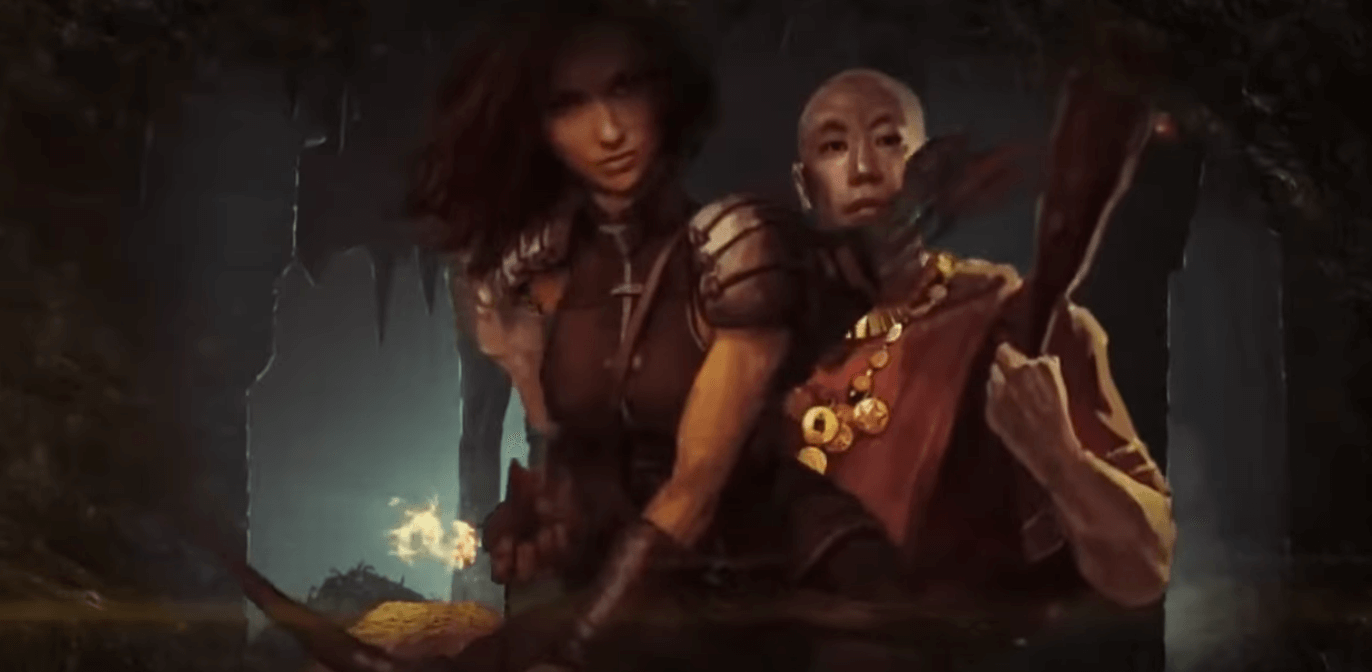
If you enjoyed Diablo 3, I think you'll be pleasantly surprised by how much Darkstone feels and plays like it. Darkstone employs the same isometric perspective as Diablo, melding click-to-move mechanics with real-time combat in a way that is fluid and satisfying. There's a deliciously dark, gothic aesthetic to the game, as there is in Diablo, that lends credibility to the fantasy backdrop. You'll find yourself immersed in atmospheric dungeons and eerie forests, battling hordes of monsters and undead in a bid to save the world from the nefarious Draak. Like Diablo's loot system, Darkstone offers a compelling mix of randomly-generated weapons and armor that you can upgrade and customize, making the hunt for the perfect gear a big part of the game's fun appeal.
Additionally, Darkstone captures the multi-class flexibility that fans of Diablo have come to appreciate. With a selection of different character classes, each with their own unique abilities and skill sets, you have the opportunity to experiment with different play styles and strategies. This extends replayability and adds a layer of depth to combat. Skill trees and stat progression further enhance this aspect of the game, allowing you to tailor your character to suit your preferred method of play. Darkstone is also less linear than some games in this genre, offering optional side quests and hidden aspects to explore, a factor reminiscent of Diablo's open-world exploration.
Darkstone is available on iOS, Android and PC, typically priced around $5.99 USD.
3. The Witcher 3: Wild Hunt

In terms of gameplay mechanics, The Witcher 3: Wild Hunt and Diablo 3 share quite a few commonalities. Both games make skill trees a critical aspect of character development. As you move through the game, you gain experience, and notably, new skills become available or current skills become stronger. Just like in Diablo 3, there is a heavy importance placed on balancing gear and abilities in order to take down stronger enemies. Combat in both games is action-focused with a good deal of strategy required - you can't just button mash your way to victory. Like Diablo 3, The Witcher 3 is also known for its challenging boss battles that take skill and strategy to conquer.
When it comes to rich, immersive game worlds, both Diablo 3 and The Witcher 3: Wild Hunt certainly deliver. Like Diablo 3's Sanctuary, The Witcher 3's universe is expansive and detailed, immersing you in a world of fantasy and unique lore. Although you follow a pre-set story, your choices in the game, like in Diablo 3, can lead to different outcomes and branching paths, making every playthrough uniquely your own. Crafting and inventory management are shared features as well. Both games reward exploration with plenty of side quests, collectibles, and resources for crafting powerful gear.
The Witcher 3: Wild Hunt is available on PlayStation 4, Xbox One, Nintendo Switch, and PC, typically priced around $40 USD.
2. Skyrim
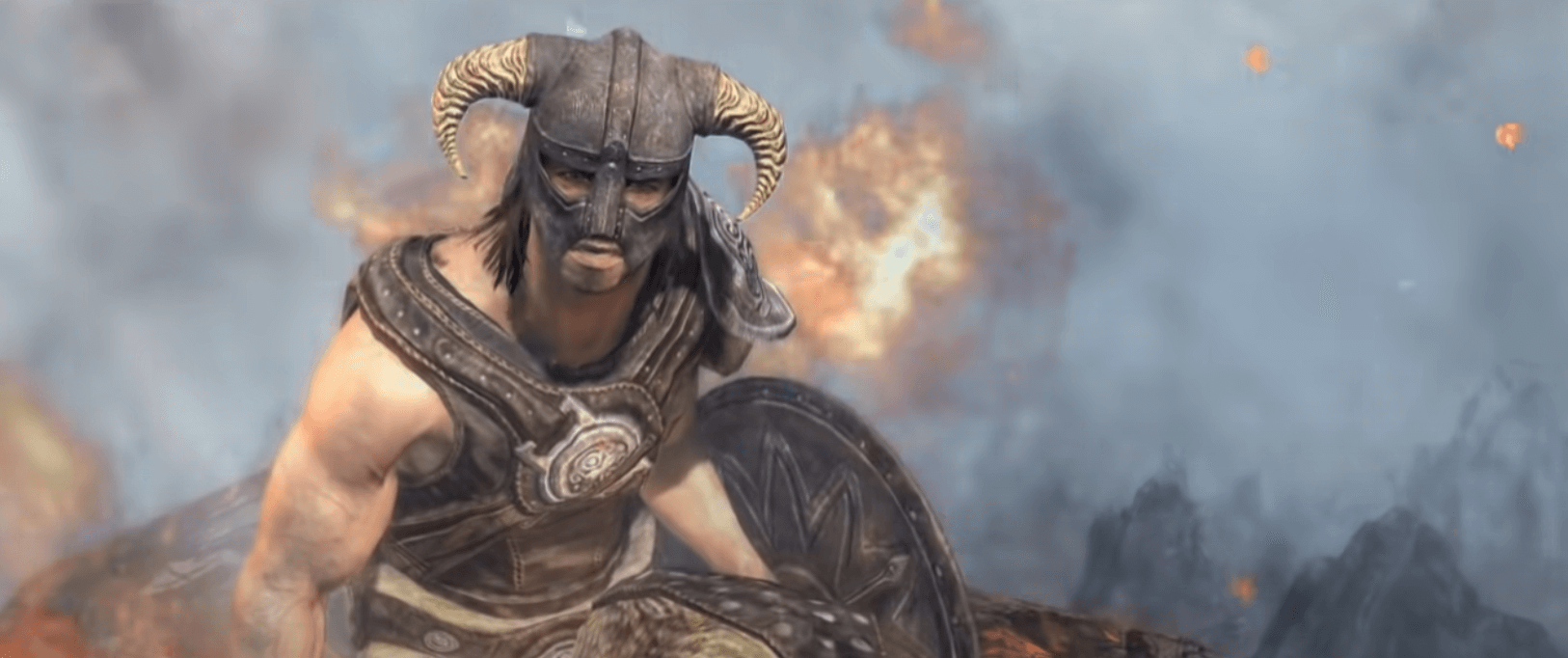
At first glance, Skyrim and Diablo 3 might appear to be quite different games, but they actually share some similar elements that should pique your interest. Both games feature an intensely immersive world filled with myth, magic, and monsters. You'll find yourself exploring various dungeons, crypts, and caves just like in Diablo, while coming across numerous mystical artifacts. The RPG elements also resemble the ones in Diablo 3; you can choose and customize your character, upgrade their skills, and modify your combat style to match your preferences. In addition, the scope of the side quests and additional stories within Skyrim are extensive, giving you ample opportunities for exploration, just like with the Nephalem Rifts in Diablo 3.
The combat style also has some similarities. Just like Diablo 3, Skyrim offers the player a chance to battle fearsome enemies, from regular bandits to gigantic dragons and undead warriors, via both melee and ranged attacks. While Diablo's combat is more JIT-arcadey, Skyrim's combat favors a more tactical approach. Not only this, loot collecting forms a significant part of both games. As in Diablo 3, in Skyrim you'll spend a substantial amount of time outfitting your character in the best armor and weapons you can find or craft, with the rare items truly setting you apart.
Skyrim is available on PlayStation 4/3, Xbox One/360, Nintendo Switch, and PC, typically priced around $40 USD.
1. Fallout 4

Both Fallout 4 and Diablo 3 share commonalities in terms of gameplay mechanics that you might find intriguing. For the most part, each game involves the player questing around an expansive world, slaying monsters, and collecting loot. Fallout 4, like Diablo 3, boasts a gameplay loop that often loops back to searching for better gear. You tackle missions and explore areas, battling formidable enemies, and reaping the rewards in a cyclical fashion, much like grinding in Diablo 3. The post-apocalyptic wasteland of Fallout 4 offers a more immersive and realistic environment with scavenge for resources playing a significant role in gameplay, it's not too far from the looting and crafting that you are used to in Diablo 3.
Another striking similarity between Fallout 4 and Diablo 3 is the deep character customization in each game. Like Diablo’s skill tree where you distribute points amongst the various skills to enhance and specialize your character, Fallout 4’s S.P.E.C.I.A.L system offers a similar RPG mechanic to mold your character's growth. Alongside this, Fallout’s extensive crafting system can offer a comparable satisfaction to Diablo’s item crafting and enchanting. Whether its power armors or little housing items - the vast options of customization to suit your play style feel very Diablo-esque.
Fallout 4 is available on PlayStation 4, Xbox One, and Microsoft Windows, typically priced around $20 USD.
You've reached the end! Check out the home page for more informative articles on your favorite games.